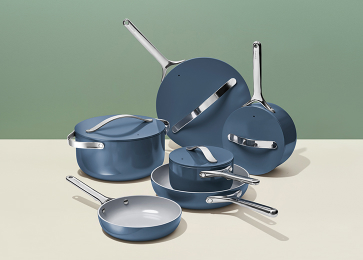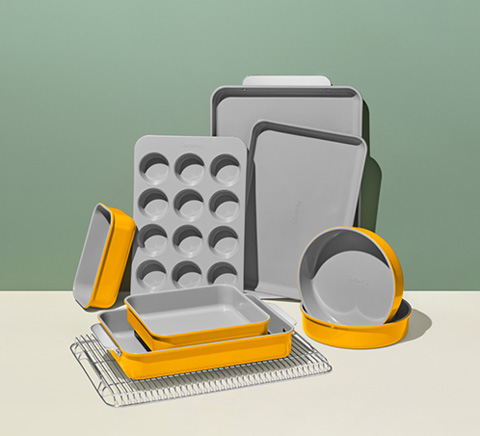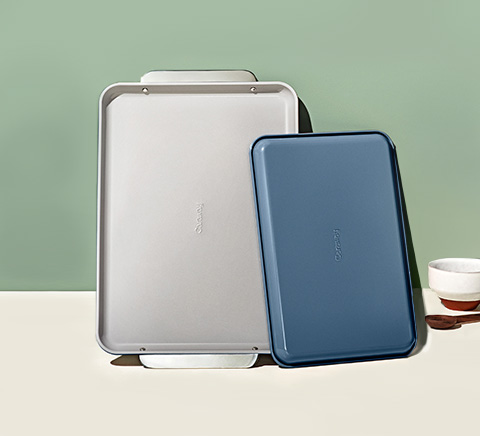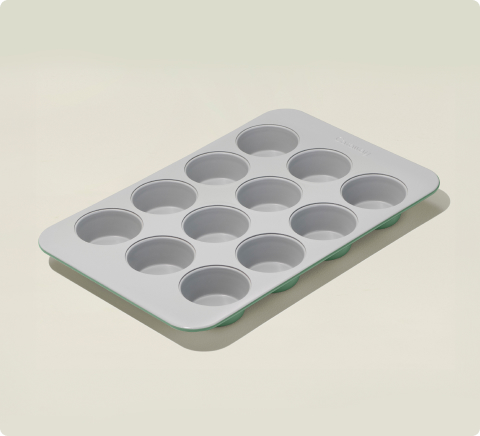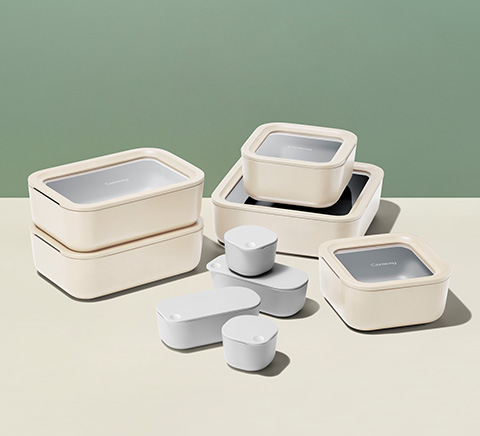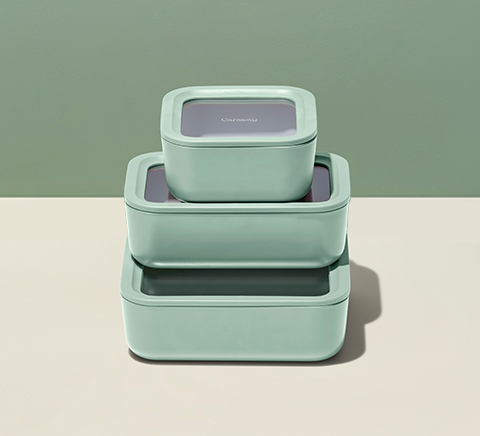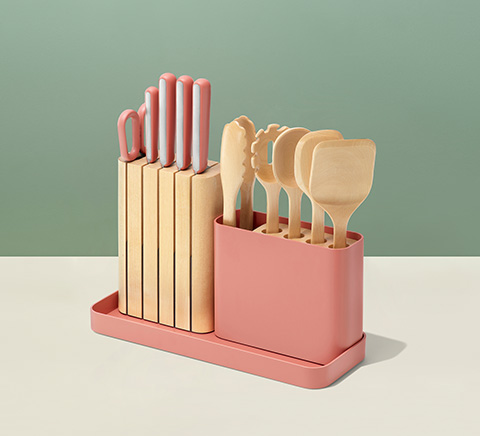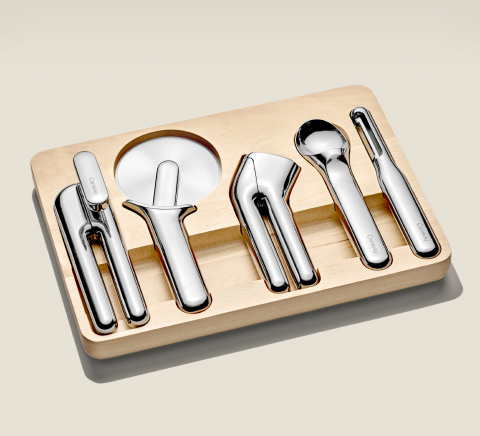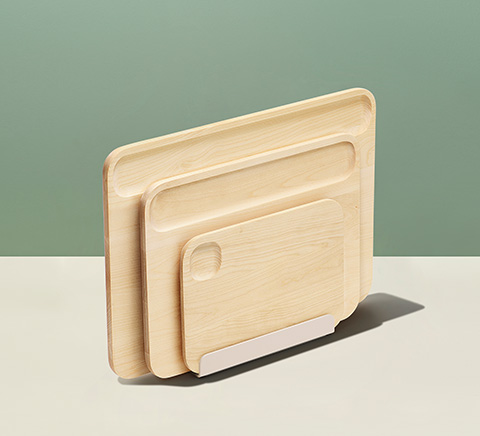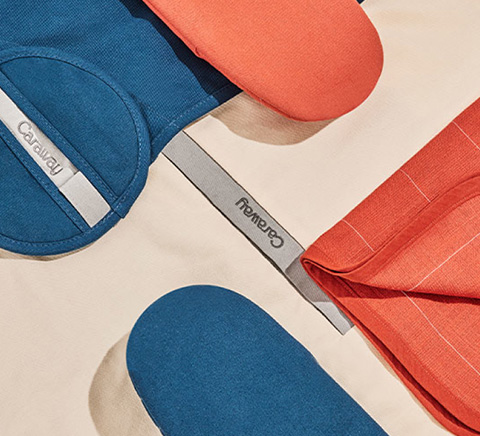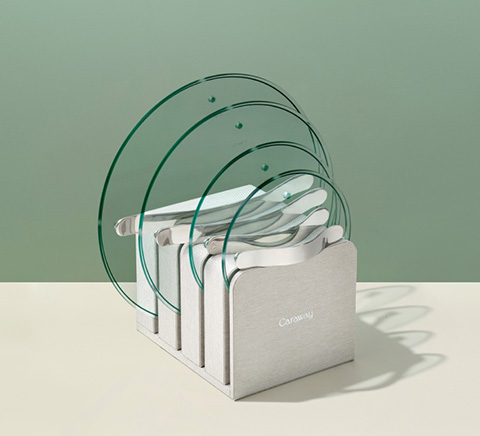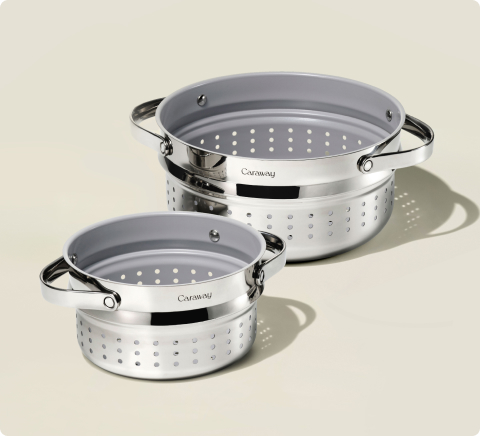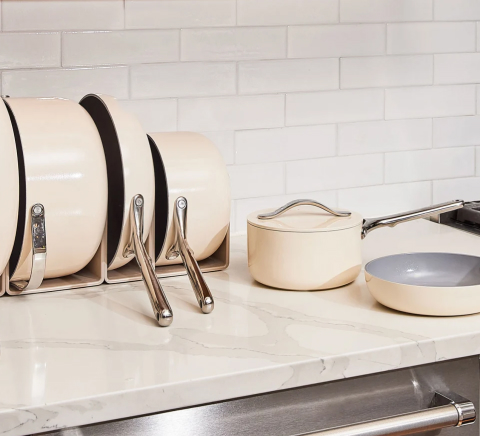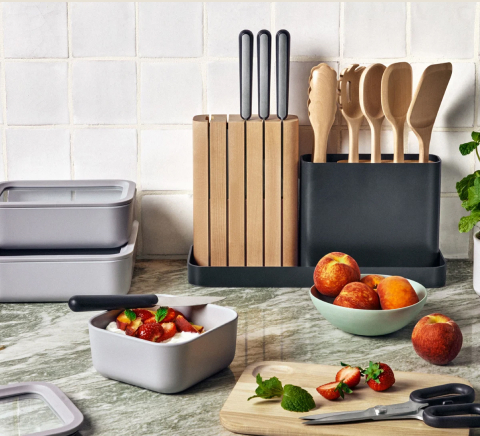At Caraway, we're not just about making kitchenware but making it better. That's why we take cast iron, a classic choice for chefs and home cooks alike, and elevate it to meet modern standards of health and convenience.
Cast iron cookware is renowned for its superior heat retention and versatility, making it a kitchen essential for everything from crispy fried chicken to tender, slow-cooked meals. However, maintaining these culinary workhorses involves more than just cooking; it requires proper care and cleaning.
In this guide, we'll dive deep into how to keep your cast iron skillets, pans, and more in pristine condition, ensuring that they not only perform beautifully but also last a lifetime.
What Is Cast Iron?
First things first, what exactly is cast iron? Cast iron is a robust, carbon-rich type of iron that's formed by casting the molten metal into molds---hence the name. It's revered in culinary circles for its unmatched heat retention and even heating capabilities.
This makes it a top choice for a variety of cooking techniques, from searing steaks at high temperatures to slow-cooking stews that benefit from consistent, low heat. The material's thickness and density allow it to maintain and distribute heat more effectively than many other cookware materials.
But how does cast iron stack up against other popular cookware materials? Let's dive into some comparisons to see why cast iron often takes the lead in performance and durability.
Cast Iron vs. Aluminum
Aluminum is known for its lightweight and excellent heat conductivity. However, it doesn't retain heat as well as cast iron and can warp under high temperatures, which affects its longevity and cooking performance. Unlike cast iron, aluminum doesn't naturally enhance flavors in foods over time. Not to mention, it can become toxic and unhealthy.
Cast Iron vs. Stainless Steel
Stainless steel is another popular choice in kitchens due to its corrosion resistance and versatility. While it's more durable in some ways (being rust-resistant and non-reactive), stainless steel does not retain or distribute heat as evenly as cast iron. It also lacks the natural non-stick properties that a well-seasoned cast iron surface offers.
Cast Iron vs. Enameled Cast Iron
Enameled cast iron adds a modern twist to traditional cast iron by featuring a smooth enamel glaze that prevents sticking and avoids the need for seasoning. Ideal for those who prefer quick cleanups and cooking with acidic ingredients without worry.
At Caraway, our Enameled Cast Iron enhances this convenience, blending timeless heat efficiency with contemporary ease of use.

What Are Common Types of Cast Iron Cookware?
Cast iron cookware is as versatile as it is durable, coming in various forms to suit any culinary need.
Here's a quick guide to the most common types:
Cast Iron Skillets
A staple in kitchens everywhere, the cast iron skillet is perfect for both the stovetop and the oven. Thanks to its superior heat retention, it's ideal for searing meats and vegetables to perfection. The seasoned surface also means that each meal adds another layer of flavor, enhancing the non-stick quality over time.
Cast Iron Pans
Similar to skillets but often deeper with a more defined edge, cast iron pans are excellent for frying and sautéing. Their thick construction ensures even cooking, making them a favorite for dishes that require high heat.
Cast Iron Pots
From simmering stews to baking hearty bread, cast iron pots are the workhorses of the slow-cooking world. Their ability to maintain consistent, low heat helps to develop complex flavors and textures in every dish. Whether it's a Dutch oven or a deep casserole, these pots are essential for any serious cook's collection.
Can Cast Iron Go in the Dishwasher?
No, traditional cast iron should never go in the dishwasher. The harsh environment and strong detergents can strip the seasoning from your cast iron cookware and lead to rust.
How To Pre-Clean Cast Iron Cookware
Before diving into the full cleaning process, pre-cleaning your cast iron can make a big difference, especially if you're dealing with common issues like stuck-on food or rust.
Stuck-On Food
For stubborn food bits, start by heating the pan on the stovetop with a bit of water --- just enough to cover the bottom of the pan. This gentle simmering, often called deglazing, helps loosen the food particles without damaging the seasoning.
Use a wooden spatula to scrape off any residue gently. Once the food is loosened, let the pan cool slightly before rinsing it with warm water and wiping it down with a scrub brush or chainmail scrubber.
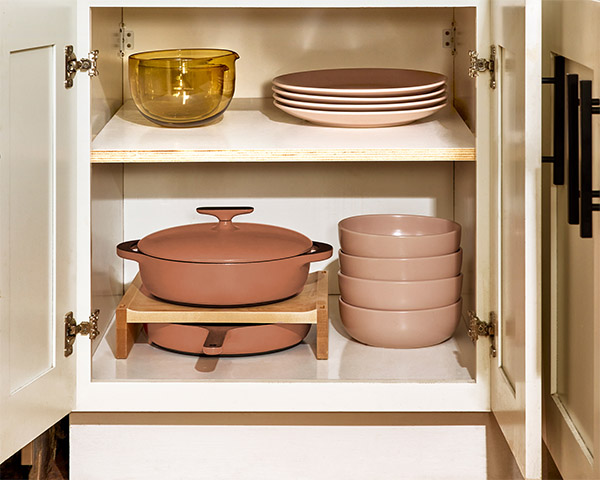
Removing Rust
Rust can seem like a death sentence for cast iron, but it's usually salvageable with a little elbow grease. If you spot rust, scrub the affected area with a mixture of coarse kosher salt and warm water.
Use a scrub brush or steel wool to work the salt into the rust. Rinse the area thoroughly with warm water, dry it completely, and apply a thin layer of cooking oil to re-season the spot. This process removes the rust and helps restore the protective seasoning layer, ensuring your cast iron continues to perform well.
What Are Common Methods of Cleaning Cast Iron?
Cleaning cast iron doesn't have to be a chore. Here are some effective methods to keep your cast iron cookware clean and well-maintained.
Dish Soap
You may have heard that you should not use dish soap on your cast iron skillets. Contrary to popular belief, using mild dish soap on your Caraway enameled cast iron cookware is perfectly fine.
A little soap and warm water won't harm your pan's seasoning if used sparingly. Just make sure to apply it with a soft sponge or brush, rinse well, and dry thoroughly after cleaning.
Kosher Salt
Kosher salt is a great, natural abrasive for tackling tougher messes on your traditional cast iron without damaging the seasoning. Sprinkle a generous amount of coarse salt into the pan while it's still slightly warm, then use a paper towel or cloth to scrub the surface. The salt acts as a gentle exfoliant to lift away food particles and residue.
On your enameled cast iron, this isn't necessary---stick to mild soap and water.
Specialty Tools
For those who want to preserve the integrity of the seasoning on their traditional cast iron, specialty tools like chainmail scrubbers are perfect. These are designed to clean effectively without stripping the seasoned surface. Paired with a bit of hot water, these tools can remove almost any residue. Again, with enameled cast iron, you can skip this tool.
How Do I Dry Cast Iron?
Proper drying is crucial to prevent rust and maintain the longevity of your cast iron. After washing, dry your cookware completely by placing it on a heated stove for a few minutes. This ensures that all moisture is evaporated from the surface. Once dry, remove it from the heat and let it cool before storing.
How Do I Store Cast Iron?
Storing your cast iron properly is key to ensuring its durability and readiness for your next cooking adventure. Always store your cast iron in a dry place. If stacking with other cookware, place a layer of paper towel between them to prevent scratches.
Can You Clean Enameled Cast Iron the Same Way?
Absolutely! While traditional cast iron requires careful handling to maintain its seasoning, our Enameled Cast Iron simplifies the cleaning process. Feel free to use soapy water with a soft sponge to clean it---just be sure to avoid salt or rough sponges. This approach saves time and spares your cookware from the harsh impacts that could degrade uncoated cast iron.
How Does Seasoning Cast Iron Affect Cleaning?
The seasoning on cast iron, achieved by baking a thin layer of oil into the pan, creates a naturally non-stick surface. This makes cleaning straightforward --- often, a quick wipe with a paper towel or a rinse under hot water will do.
What Are Common Mistakes To Avoid When Cleaning Cast Iron?
Avoid these pitfalls to keep your cast iron in prime condition:
-
Overusing Soap: While a little mild dish soap won't harm well-seasoned cast iron, excessive use can strip the seasoning. Use it sparingly.
-
Letting Water Sit: Leaving water in your pan can lead to rusty cast iron. Always dry your cookware thoroughly after washing.
-
Scrubbing Too Hard: While a stainless steel scrubber might seem like the best way to clean, it can scratch the seasoning off. Opt for a softer scrubber or chainmail scrubber.
-
Ignoring Rust: If rust appears, don't wait --- tackle it immediately with a scrub brush or a specially designed scraper to remove rust and restore the seasoning.
-
Using Too Much Oil: After cleaning, a thin layer of flaxseed oil or Crisco is perfect for maintaining the seasoning. Too much oil can result in a gummy buildup that degrades performance.

A Final Word on Cleaning Cast Iron
Cleaning cast iron skillets, pans, and more is straightforward with the right approach. At Caraway, we design our cookware to not only perform superbly but also to be easier to maintain than traditional options. Remember, a little care goes a long way --- regularly removing gunk, not letting water sit, and avoiding harsh scrubbers can keep your cooking surfaces in excellent condition.
If you're looking for an even easier experience, consider our range of Enameled Cast Iron Cookware. It combines the best of traditional cast iron with a modern twist, making cleanup as simple as possible without compromising on quality or style.
Explore our collection today and elevate your cooking and cleaning experience with Caraway's non-toxic, non-stick, and incredibly stylish cookware.
Sources:
Cast iron | Definition, Composition, History, & Facts | Britannica
